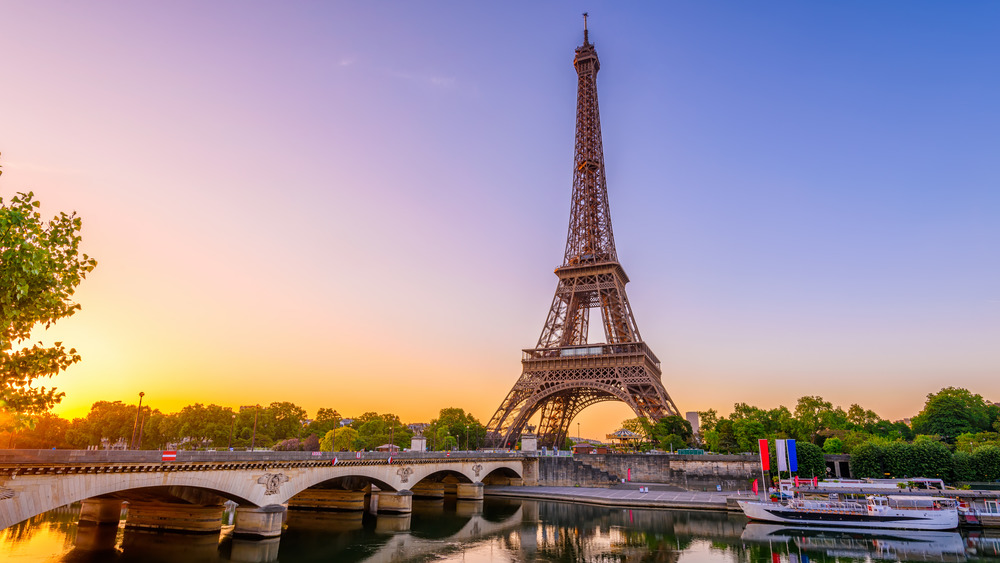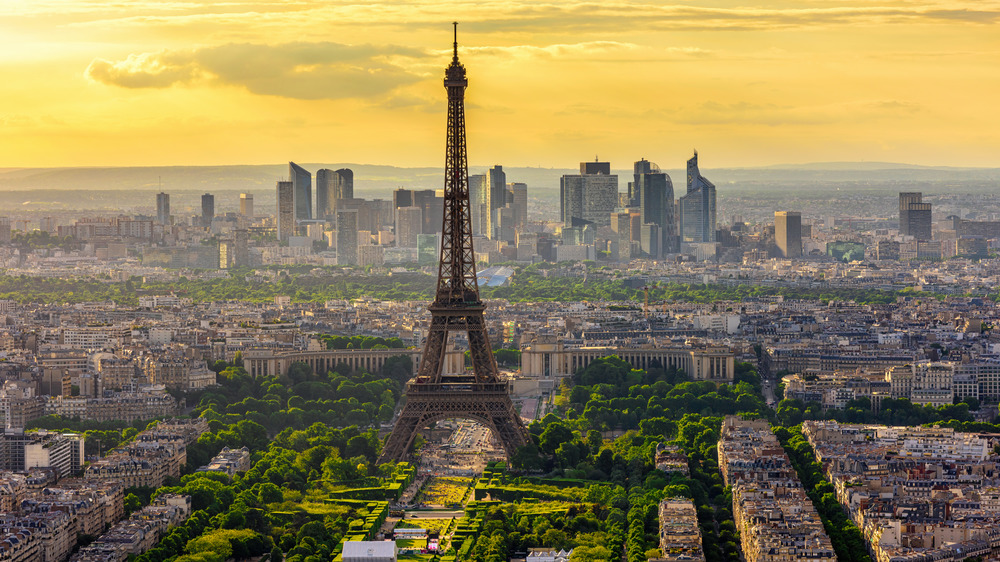Why The Eiffel Tower Was Only Supposed To Be Temporary
It's hard to think of Paris without immediately thinking of the Eiffel Tower. Originally built in 1889, the iconic structure has become one of the most recognizable landmarks in the world. It has become synonymous with Paris itself and continues to draw tourists from all over the world to the city. Built out of wrought iron and comprised of complex latticework, the Eiffel Tower was the tallest man-made structure in the entire world for a time, before it was finally topped by the construction of the Chrysler building in New York.
What most people might not know, though, is that the Eiffel Tower was not built to be a permanent structure. In fact, not only was the tower meant to only be a temporary creation, but it was initially criticized by the city's then-great artists and architects, who passionately and publicly opposed the construction of it. But why was the Eiffel Tower built in the first place, and why wasn't it meant to be permanent?
Why the Eiffel Tower was originally built
The Eiffel Tower was originally built as the entrance to the 1889 World's Fair, which itself was meant to celebrate the 100th anniversary of the start of the French Revolution. It was designed by Gustave Eiffel, Maurice Koechlin, and Emile Nouguier. Koechlin and Nouguier were employees at Eiffel's company and are credited with the actual design of the tower itself.
The tower was designed to be the tallest man-made structure in the world — a title it held for a little over 40 years. But since it was built primarily for the World's Fair, the tower was supposed to stand for only 20 years, at most. In 1909, ownership of the tower was set to switch over from Eiffel to the City of Paris, and it was expected that the tower would be torn down at that time. Of course, that didn't happen, and the Eiffel Tower has grown to become one of the world's most recognizable and beloved structures.

